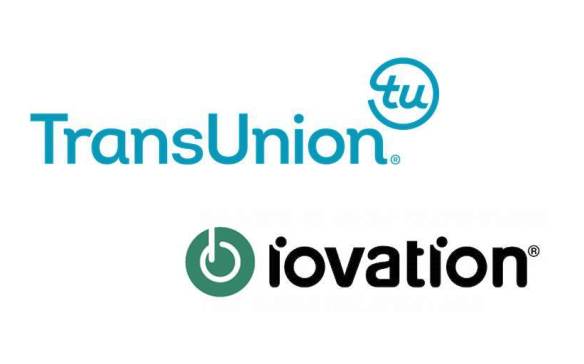-
Connecting Personal and Digital Identities is Putting the Brakes on $1 Billion Synthetic Identity Fraud Problem
-
Combined power of TransUnion and iovation helping reduce fraud in the financial services industry
In the fight against synthetic identity fraudsters, the pendulum may finally be swinging toward lenders. Instances of synthetic fraud and outstanding balances for suspected synthetic accounts have mostly slowed or declined in the last year for auto, credit card, retail credit card and personal loans.
The slowdown in growth is coming as TransUnion (NYSE: TRU) and iovation, a TransUnion company, have combined their fraud prevention offerings via IDVision® with iovation®.
The suite of solutions unite both personal and digital identities to detect threats across markets while ensuring seamless user experiences. IDVision with iovation combines traditional data science with artificial intelligence and machine learning to offer insights to businesses at every consumer touchpoint.
 “In the 15 months since TransUnion acquired iovation, we have made great strides in protecting both businesses and consumers,” said Geoff Miller, head of global fraud and identity solutions for TransUnion. “Synthetic fraud has increased in each of the last five years, but we are seeing growth dissipate due to the financial industry’s use of fraud protection solutions such as IDVision with iovation.”
“In the 15 months since TransUnion acquired iovation, we have made great strides in protecting both businesses and consumers,” said Geoff Miller, head of global fraud and identity solutions for TransUnion. “Synthetic fraud has increased in each of the last five years, but we are seeing growth dissipate due to the financial industry’s use of fraud protection solutions such as IDVision with iovation.”
Synthetic identity fraud involves fraudsters creating fictitious identities by piecing together real identity attributes and fake information with the intent to open fraudulent accounts. According to an analysis of TransUnion data, total synthetic fraud balances rose marginally to $1.02 billion in Q2 2019 from $1.01 billion in Q2 2018. This type of fraud has slowed in recent years after spiking from $524.5 million in Q2 2015 to $854.4 million in Q2 2016.
Growth in Outstanding Balances for Suspected Synthetic Accounts is Slowing
|
Loan Category |
Q2 2019 | Q2 2018 | Q2 2017 |
|
Auto Loans |
$630.5 million | $621.9 million | $590.7 million |
|
Credit Cards |
$277.5 million | $281.9 million | $289.1 million |
|
Retail Credit Cards |
$76.0 million | $72.7 million | $66.4 million |
|
Unsecured Personal Loans |
$33.6 million | $32.7 million | $24.4 million |
|
Total |
$1.02 billion | $1.01 billion | $0.97 billion |
Furthermore, the instances of synthetic fraud have dropped markedly for most credit products. The number of new auto loans linked to a synthetic fraudster declined to 0.16% in Q2 2019, down from 0.22% in Q2 2018. Such incidents also dropped for retail cards in the same timeframe from 0.14% to 0.12%
Instances of Synthetic Fraud Mostly Declining
|
Loan Category |
Q2 2019 | Q2 2018 | Q2 2017 |
|
Auto Loans |
0.16% | 0.22% | 0.22% |
|
Credit Cards |
0.26% | 0.24% | 0.28% |
|
Retail Credit Cards |
0.12% | 0.14% | 0.15% |
|
Unsecured Personal Loans |
0.08% | 0.08% | 0.07% |
“The device is the lynchpin to fighting synthetic fraud by identifying if it has previously been associated with a synthetic identity and if it’s been used to open up an abnormally high number of accounts in a short period of time,” said Greg Pierson, iovation CEO. “Utilizing personal and digital identities is a unique approach to battling fraud, and we believe the continued and increased use of these solution sets will help identify more fraudsters while protecting revenue.”
As Online Transactions Go Mobile, So Does Fraud
Leveraging digital and personal intelligence to fight fraud is especially important today as mobile becomes the platform of choice for consumers – as well as fraudsters. According to iovation data, in 2018 mobile made up 51% of the worldwide online financial services transactions compared to 49% for desktop. This was the first time mobile was in the majority and nearly double the percentage in 2014 when it made up 28% of transactions.
At the same time, suspected global fraud from mobile devices in the financial services sector has increased. In fact, the percentage of transactions denied due to fraudulent behavior for iovation’s financial services customers jumped to 41% in 2018 compared to 21% in 2017.
The type of a device being used is also an indicator of fraud. From July 2018 to June 2019, iovation found Windows and Android devices had the highest percentage of suspected U.S. financial services fraudulent transactions coming from them at 0.54% and 0.50%, respectively. These were followed by iOS (0.27%) and Mac (0.26%) devices.
“Fraudsters often build up their identities and credit profiles on specific devices that can be tied together. Identifying these fraudsters with the device early in the scheme before a credit history is built up is critical in preventing the proliferation of the identity and losses ultimately generated through fraudulent loans and purchases,” added Pierson.
Taking the Fight to Fraudsters
Using mobile for synthetic fraud purposes is just one of many other forms of fraud impacting the financial services, insurance and public sectors, among other areas. However, it’s also one of the most difficult to guard against as enterprising fraudsters have utilized technology like mobile emulators to their benefit.
The creation of IDVision with iovation aims to change the playing field. IDVision with iovation features a combined platform leveraging one billion consumer records and intelligence from experience with over six billion devices.
“The insights and analysis derived from our massive device and personal data is the game-changer for businesses in their fight against fraud,” concluded Miller.
For more information about IDVision with iovation, please click here.
Source: TransUnion Press Release


























